Is rice a vegetable? Or is it considered a seed, fruit, or grain? In this post, I explain everything you need to know about rice, including how it fits into a healthy, balanced diet.
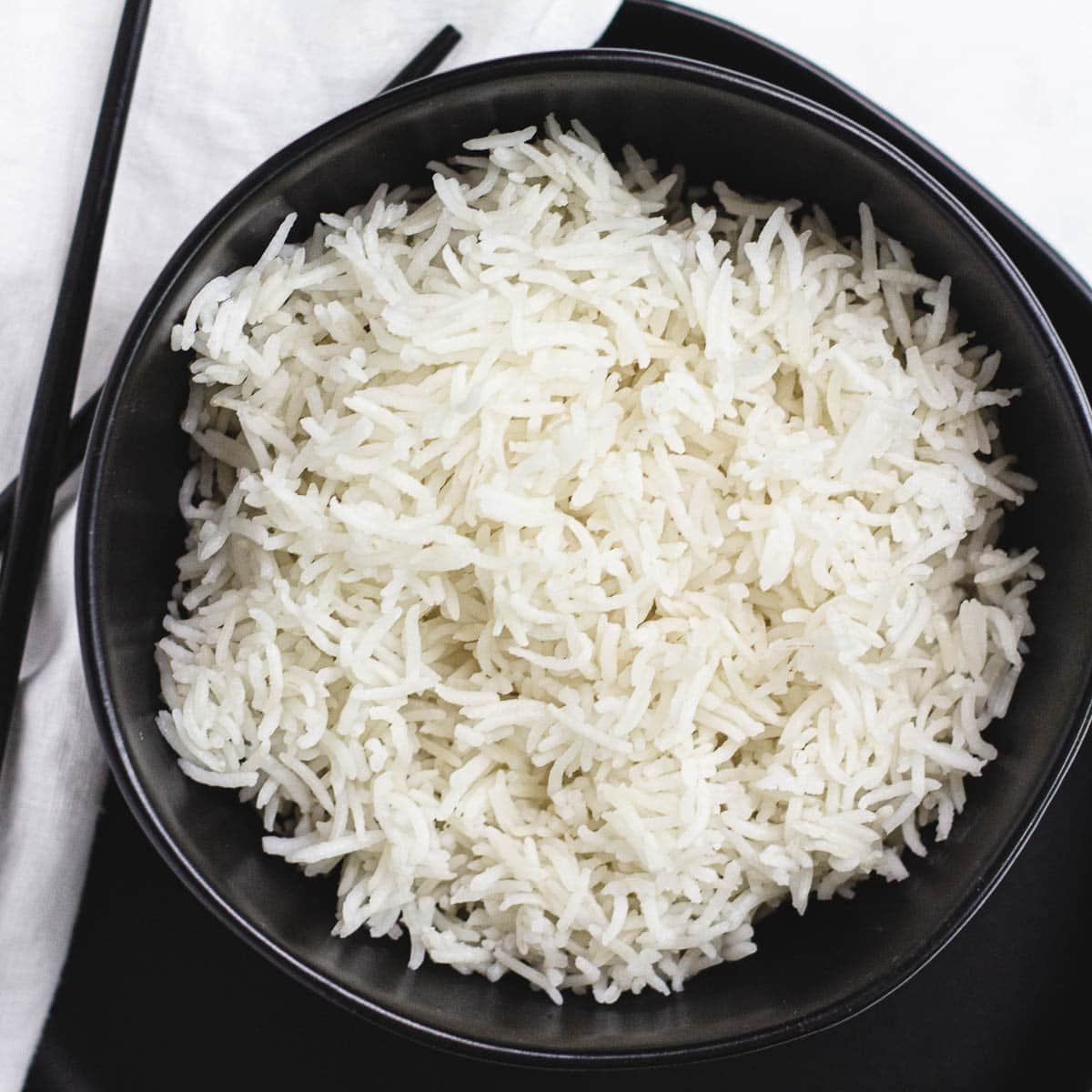
Have you ever wondered what food group rice falls under? If so, you’ve come to the right place. Rice is derived from a plant and is one of the most popular foods around the world. But where exactly does it come from? How is it harvested? Is it healthy to eat? Is rice a vegetable? In this post, I explain how rice is defined, as well as where it comes from, how it is harvested, and how it is scientifically categorized.
Jump to:
- Is Rice A Vegetable?
- What Is Rice?
- How Is Rice Grown?
- What Are Vegetables?
- How Are Vegetables Defined?
- Is Rice A Fruit?
- Is Rice A Grain?
- Is Rice A Seed?
- What Are The Different Types Of Rice?
- Can Vegans And Vegetarians Eat Rice?
- Is Rice Healthy?
- Is There Arsenic In Rice?
- Benefits Of Eating Rice
- Are Riced Vegetables Actually Rice?
- Final Thoughts
- Try Some of These Recipes with Rice!
Is Rice A Vegetable?
Rice is a healthy and delicious plant-based food. However, rice is not a vegetable. Rice grows differently from many other types of plants, as it needs constant irrigation. This makes it a semi-aquatic plant. While it is generally healthy to eat rice, it is considered a grain. This makes it a starch and while there are starchy vegetables, rice is not one of them.
What Is Rice?
Rice is the seed of a type of grass known as Oryza Sativa. There are many different types of rice, and the specific type of plant it comes from varies slightly depending on the variety. Wild rice comes from the grass species Zizania and Porteresia. Rice is the most popular food consumed by over half of the population, especially those living in Africa and Asia.
How Is Rice Grown?
Rice requires a tropical environment to grow. It is mostly grown in Asia, but there are some places in the United States that grow rice. Rice is most commonly grown in paddies which are irrigated fields that have 2-4 inches of water. This is because it suppresses weeds, making it unnecessary to use pesticides. The rice plant thrives in water, while the weeds drown. It takes about 3-6 months for the rice to be prepared for harvesting. The rice kernel is enclosed by the husk. During the milling process, the hull and the bran layers are removed from the rice kernel. Sometimes glucose and talc is added to give the rice kernel a sheen. The rice that has all of the bran removed is white rice. Rice that doesn’t have the bran removed is brown rice.
What Are Vegetables?
A vegetable is defined as a plant that is grown for its edible parts. This is a rather broad definition of vegetables. More specifically, vegetables are considered plants that are grown for their leaves, stems, roots, tubers, bulbs, and flowers. There are dark green vegetables and orange vegetables such as carrots and sweet potatoes. If you consider the first definition which considers a vegetable any plant that is grown for its edible parts, then rice could be considered a vegetable. However, that also means that all fruits are also considered vegetables.
How Are Vegetables Defined?
Vegetables are most commonly considered the edible part of a plant such as the leaves (spinach), stems (celery), roots (carrots), tubers (potatoes), bulbs (onions), and flowers (broccoli) of a plant. In the less scientific definition, vegetables are savory while fruits are sweet. That’s why we consider tomatoes to be a vegetable even though they are actually the fruit of a plant.
Is Rice A Fruit?
Rice is not a fruit. According to Webster’s Dictionary, fruits are “the sweet and fleshy product of a tree or other plant that contains seed and can be eaten as food.” By this definition, rice is not considered a fruit because it is neither a fleshy nor sweet. The scientific term for the part of a plant that produces rice is called caryopses. While this part of the plant is derived from the ovary of a flower, which could be considered a fruit, it is neither sweet nor fleshy, which means that rice is not a fruit.
Is Rice A Grain?
Yes, rice is considered a grain. According to Webster’s Dictionary a grain is “the seeds or fruits of various food plants including the cereal grasses and in commercial and statutory usage other plants (such as the soybean).” The kernel of rice is a small seed that is edible. While grain is not a scientific term for a part of the plant, it is considered a food group. Grains include wheat, barley, and oats. Like other grains, it contains bran, germ, and endosperm. Also, like other grains, the inedible hull is removed to produce the edible portion of the rice kernel.
Is Rice A Seed?
Rice is a seed. While rice is a grain, it is also considered a seed. As I’ve mentioned previously, rice is the seed of the grass plant Oryza sativa. Rice is similar to other plants that are also seeds such as corn, peas, and beans.
What Are The Different Types Of Rice?
There are many different varieties of rice. There is white rice and brown rice, wild rice, black rice, and so many others. Then there are specific types of white rice such as long grain, short grain, arborio, and basmati. While there are numerous rice varieties, they all fall under three main categories: long grain, medium grain, and short grain. Long grain rice is 3-5 times the length of its width. Medium grain rice is about 2 times the length of its width, and small grain rice has a relatively equal length to width.
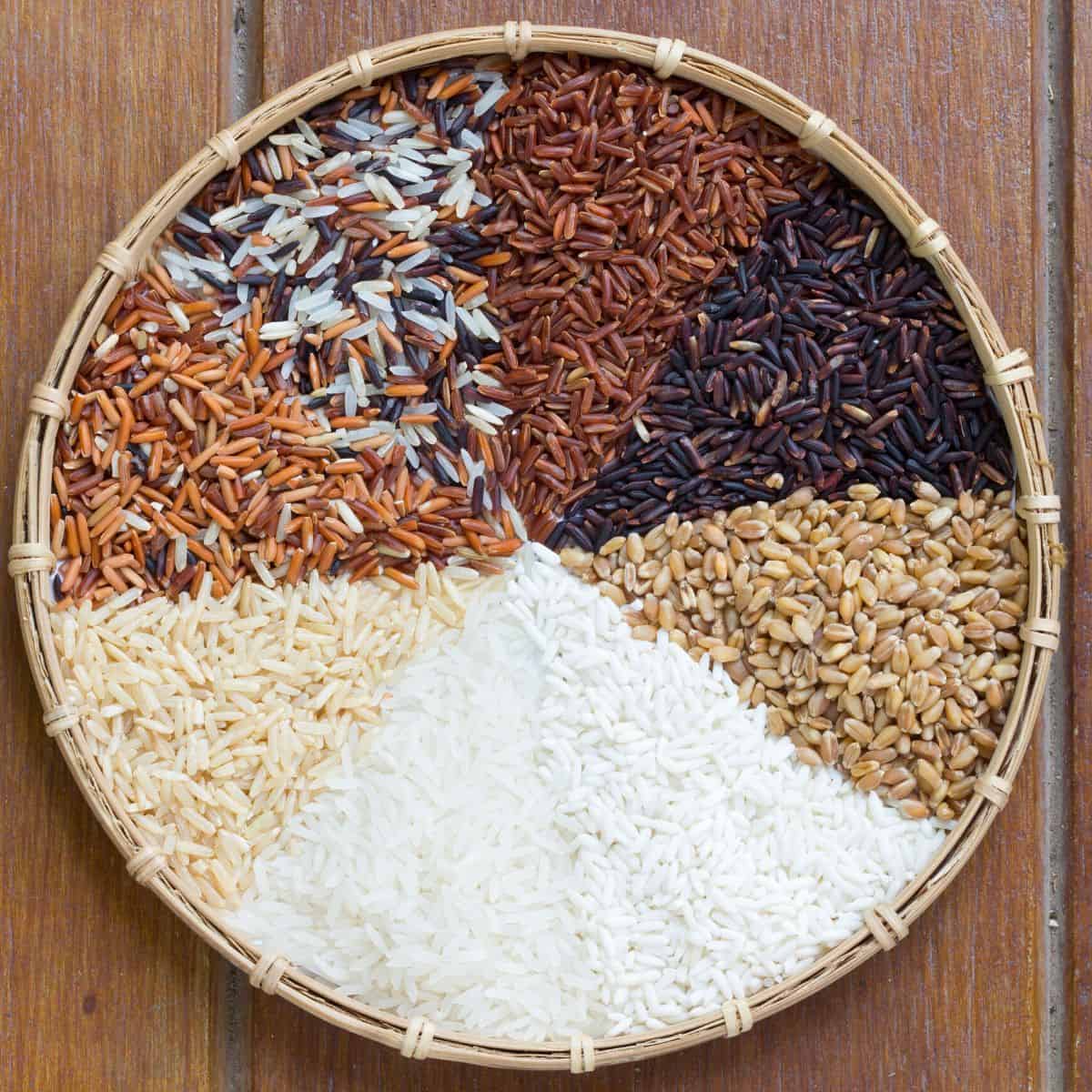
Long grain varieties include basmati, jasmine rice, Carolina gold, morga rice, wild rice, American long grain rice, and red rice. These types of rice are great to serve with stir-fries, and curries where they can soak up the flavors of the sauce.
Medium-grain rice varieties include arborio, valencia, carnaroli, black rice, and calrose. Medium rice varieties are known to be thicker and starchier than long-grain rice. They are good in foods such as risotto, paella, and soups, where thickness and creaminess are welcome.
Short Grain Rice varieties include sushi rice, brown short-grain, and bomba. This variety of rice has a similar length to its width, and has a sticky texture.
Can Vegans And Vegetarians Eat Rice?
Vegans do not consume any animal products including meat, fish, poultry, dairy, and eggs. Vegetarians, on the other hand, do not consume any meat, fish, or poultry, but they do consume dairy and eggs. With this definition, both vegans and vegetarians can eat rice. It is a healthy part of a plant-based diet. Rice is derived from a plant making it suitable for those that follow a plant-based diet. Rice is not only vegan and vegetarian, but it is also gluten-free, which makes it suitable for those with celiac or following a gluten-free diet. One important note to be aware of when it comes to rice is that in order to cook it you need to use a liquid such as water. Some restaurants and recipes use animal ingredients such as chicken stock instead of water to add more flavor to cooked rice. Using this method would make the rice unsuitable for vegans and vegetarians. Usually, rice served at a restaurant is vegetarian. But if you go to a restaurant and they call their rice pilaf, it is most likely cooked in stock.
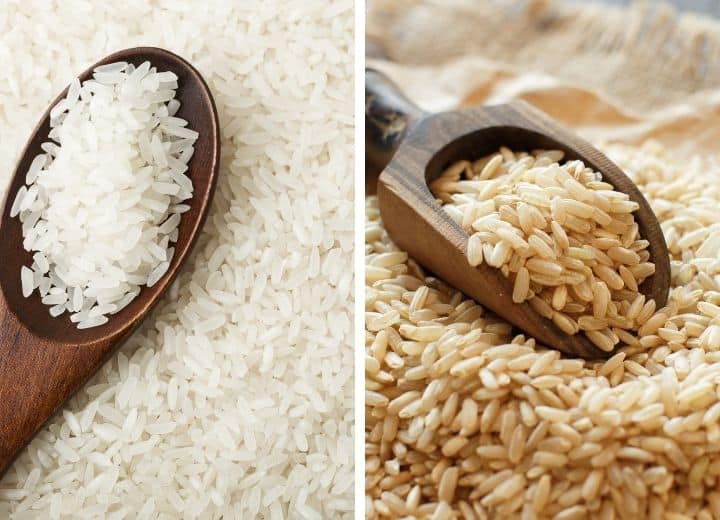
Is Rice Healthy?
Rice is a staple food in many cultures, and there is a reason for this. Rice is a good source of carbohydrates. While carbs get a bad rep, they are the body’s main source of fuel. Carbohydrates that are a good source of fiber are better than those without fiber. This is because fiber helps you feel fuller longer, while carbohydrates that have been stripped of their nutritional content such as white carbs turn into sugar in the body and in turn make you feel hungry more quickly causing you to eat more than you need. Rice is not only a good source of fiber, but it’s also a good source of manganese, selenium, magnesium, and B vitamins.
Is Brown Rice Healthier Than White Rice?
While rice can be a healthy addition to your diet, it’s important to note that there are a few concerns with the consumption of rice as well. White rice has been stripped of its bran and germ which means that the fiber, vitamins, and minerals from the rice kernels have also been stripped. This is why brown rice is typically considered healthier than white rice. But it’s important to note, that white rice is usually enriched with iron and B vitamins, adding some of those nutrients back in. But then there is also concerns with brown rice. Since brown rice isn’t stripped of its bran or germ it typically contains higher arsenic values. As far as nutritional value goes, brown rice will have higher nutrients and fiber, but also higher arsenic values, while white rice will have fewer nutrients, but lower arsenic values.
Is There Arsenic In Rice?
Yes, there is arsenic in rice. Rice is more susceptible to absorbing arsenic than other vegetables and grains because of the way it is grown in paddies. However, rice is safe to consume in moderation. Studies show that up to 60% of arsenic is removed from rice during the cooking process. Rinsing rice is another important step in the process of removing arsenic before cooking. If you want to be on the safe side where arsenic is concerned choose to consume white rice over brown rice. With that being said, rice consumption should be limited when it comes to children and babies.
Benefits Of Eating Rice
While there are a few concerns with regard to the consumption of rice in a healthy diet including weight gain, and arsenic values, rice, in fact, is a healthy food to add to your diet. There are many misconceptions surrounding rice.
Good Food For Weight Loss
While there is a connection between refined white grains and weight gain, studies have shown that when it comes to white rice there is no connection. In fact, white rice does not help you lose or gain weight. It is important to note, that overconsumption of any food, rice included, can cause weight gain. But white rice in and of itself has no effect on weight loss or weight gain in any significant way. However, whole grains such as brown rice have shown to aid in weight loss due to their fiber content.
Boosts Immunity
As mentioned above, white rice often has nutrients added back in after the stripping process. These nutrients include iron, B vitamins, niacin, and folate. Folate is particularly helpful for immunity because it helps your cells divide. This helps all cells in your body, including those in your immune system. When it comes to boosting immunity, red rice is particularly helpful.
Diabetes Control
Brown rice is particularly good for those with diabetes because it helps control their blood sugar. White rice on the other hand can cause a blood sugar spike.
Improves Heart Health
Brown rice is good for those looking to improve their heart health. The high fiber content of brown rice helps to reduce cholesterol and includes vitamins and minerals that aid in the process of the transport of oxygen through the blood as well as other vital functions of the heart.
Improves Digestive Health
The insoluble fiber in brown rice promotes digestive health. Since it is also gluten-free, those with celiac can safely consume brown rice and get the fiber they need for regular digestive health.
Rice Is Gluten-Free
Those that have celiac or follow a gluten-free diet can safely consume rice. It is naturally gluten-free. Many gluten-free products such as crackers and pasta are made with rice flour.
Are Riced Vegetables Actually Rice?
You may have seen in your local grocery store either in the vegetable section with the salads or in the freezer section, riced vegetables. What exactly are rice vegetables? Are they actually rice? Riced vegetables are not actually rice. One of the more popular varieties of riced vegetables is riced cauliflower which is cauliflower that has been ground up into small pieces the size of a grain of rice. Since cauliflower is also white it resembles rice. It has been used as a substitute for rice for those that want to reduce their carbohydrates.
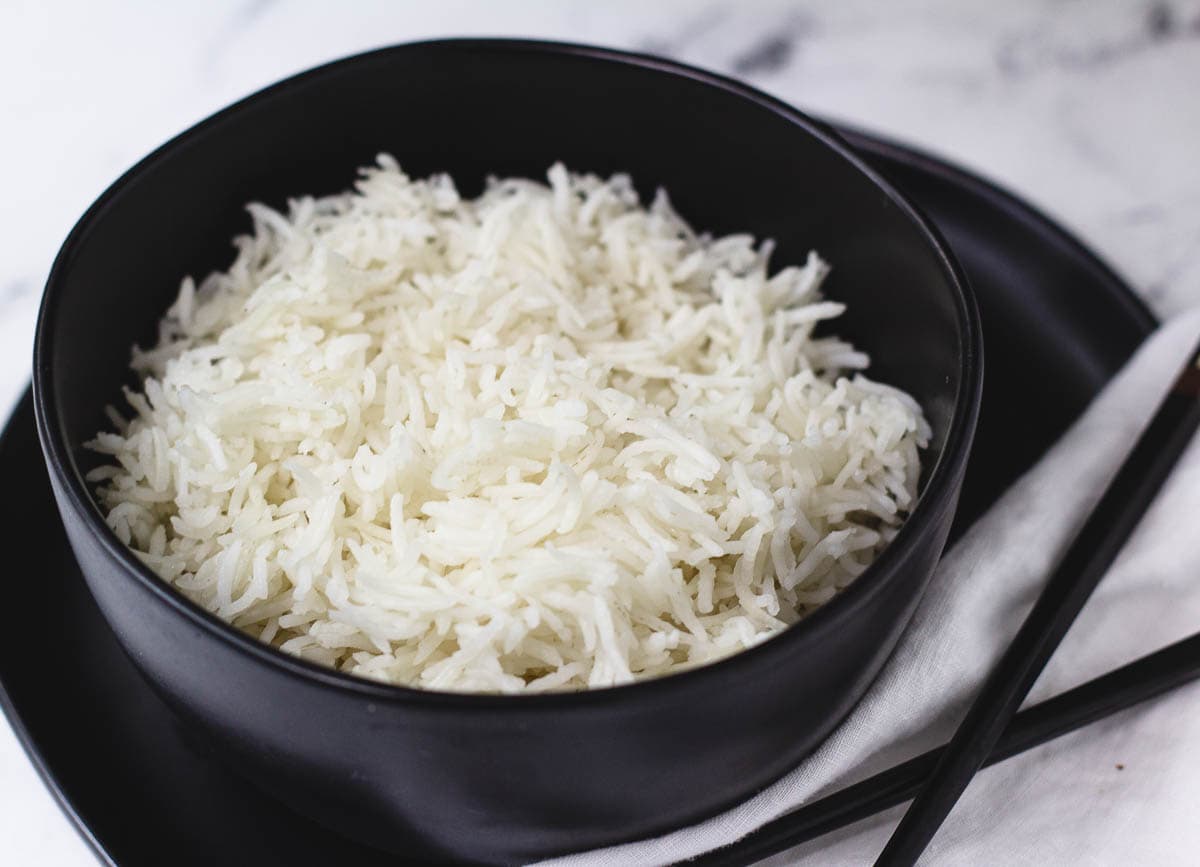
Final Thoughts
Rice is not a vegetable. It is the seed of the Oryza Sativa grass plant that is grown in tropical regions. Rice falls under the grain food group. It is gluten-free, making it suitable for those with celiac. It is plant-based, so it is also suitable for vegans and vegetarians. While rice has had some controversy surrounding whether or not it is a beneficial addition to a healthy diet, when consumed in moderation, rice is safe and healthy to eat. There are numerous varieties of rice, all with slightly different flavors and textures. Try them all and enjoy this simple food as part of a healthy diet.
Try Some of These Recipes with Rice!
Please comment below if you found this article helpful or have any additional questions. You can also follow me on Instagram, Pinterest, and Facebook for more family-friendly vegan recipes!
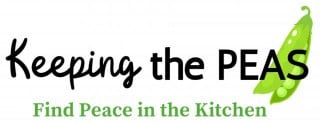

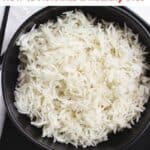
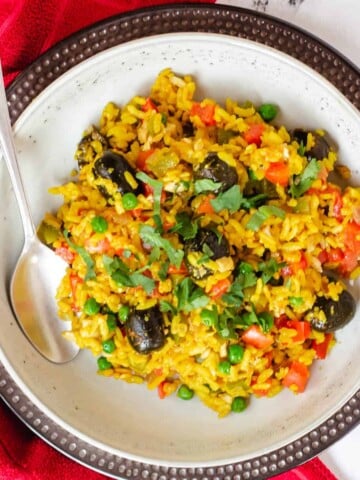
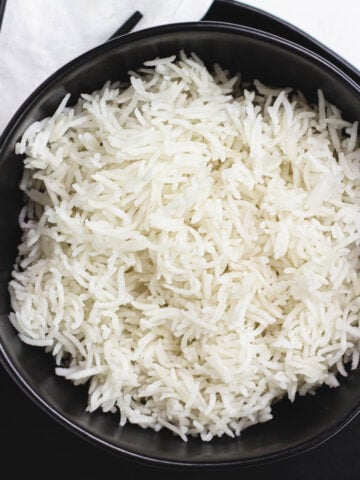
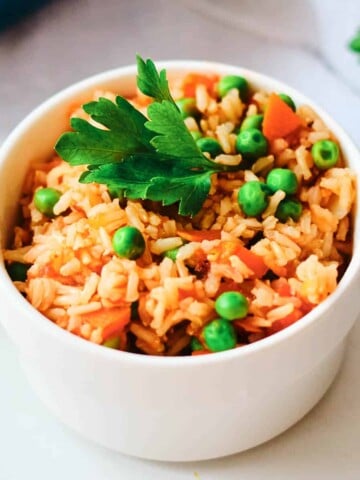
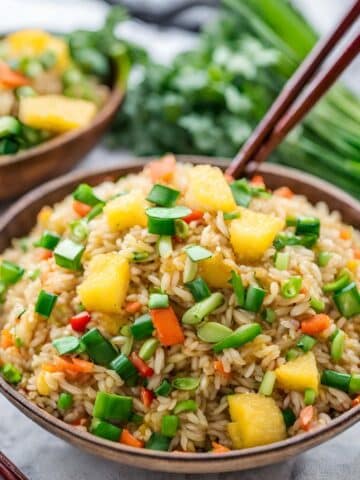
Leave a Reply